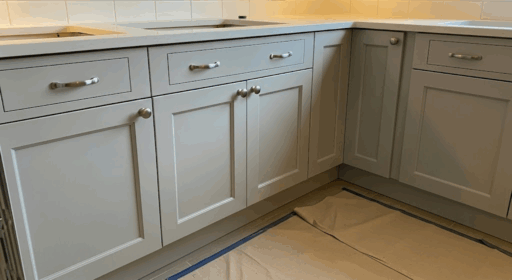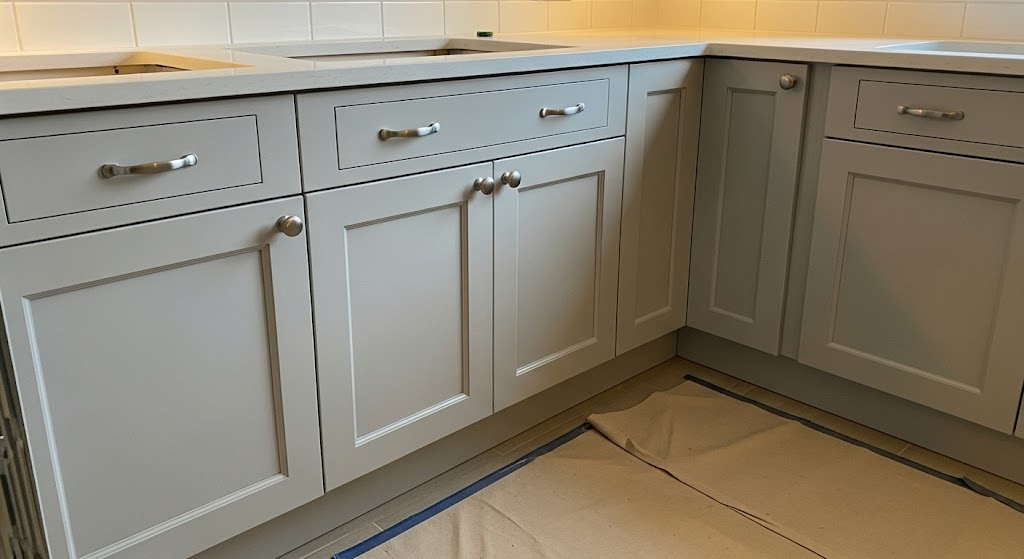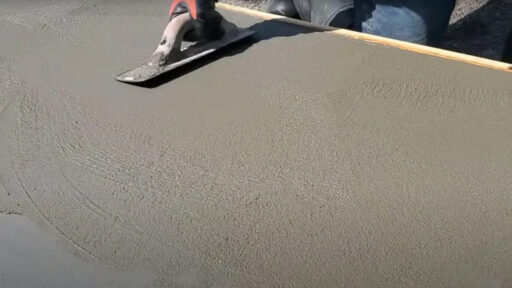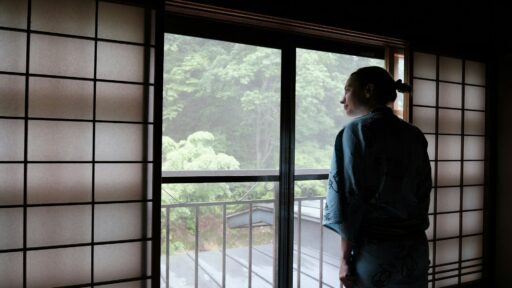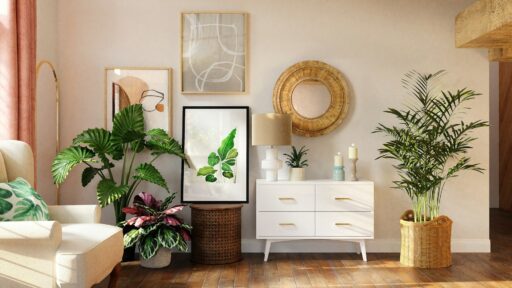Can you paint laminate cabinets? Absolutely!
Choosing the wrong paint can leave you with peeling, chipping cabinets within months.
I promise you’ll learn exactly which paints work best for laminate surfaces and why your product choice makes all the difference.
You’ll get my proven tips for picking paints that actually stick and last for years, plus the prep work that ensures professional-looking results.
Ready to give your cabinets the perfect makeover?
Materials and Tools for a Flawless Finish
| Category | Tools |
|---|---|
| Prep Tools | Screwdriver set, Drop cloths, Degreasing cleaner, Cleaning rags, 150-grit sandpaper, Sanding block, Tack cloth, Plastic bags |
| Prime Tools | High-adhesion primer, 2-inch angled brush, Foam roller (4-inch), Roller tray, Stir sticks |
| Paint Tools | High-quality brushes (2-inch & 1-inch), Foam rollers, Mini rollers (4-inch), Paint tray, Brush comb |
| Finish Tools | Fine-grit sandpaper (220-grit), Polishing compound, Clean rags, Drill with bits |
| Optional Tools | Paint sprayer, Sanding sponges, Brush extender, Work lights, Drying rack |
How to Paint Laminate Cabinets?
I’ve painted dozens of laminate cabinets over the years, and I can tell you the prep work makes or breaks your project. Skip these steps, and you’ll watch your hard work peel off in sheets.
1. Start with a Deep Clean
First, I remove all cabinet doors and hardware. Then I clean every surface with a degreasing cleaner. Kitchen cabinets collect grease and grime that paint won’t stick to. I use:
- Trisodium phosphate (TSP) cleaner for heavy buildup
- Warm soapy water for light cleaning
- Clean rags that won’t leave lint behind
2. Sand Smart, Not Hard
Here’s what most people get wrong: You don’t need to sand laminate down to bare wood. I use 150-grit sandpaper to scuff the surface lightly. This gives the primer something to grip onto.
The goal is to dull the shine, not remove the laminate. I sand in circular motions and wipe away all dust with a tack cloth.
3. Prime
Primer is absolutely essential for painting laminate cabinets. I never skip it. I use a high-adhesion primer, both designed for slick, glossy surfaces. After deep-cleaning with a degreaser and lightly sanding, I apply thin, even coats with a foam roller or quality brush.
For better coverage and to spot missed areas, I sometimes get the primer tinted. Let the primer dry fully before painting to ensure a durable, professional finish.
4. Curing Time
Here’s where many DIYers mess up. I let each coat cure completely before moving to the next step. That means:
- Primer: 24 hours minimum
- Between paint coats: 4-6 hours
- Final cure: 72 hours before heavy use
Trust me, rushing this process will cost you more time in the long run.
Choosing the Right Paint
I’ve tested every type of paint on laminate cabinets, and let me tell you, they’re not all created equal. Here’s my honest breakdown of what works and what doesn’t.
Acrylic Latex Paint
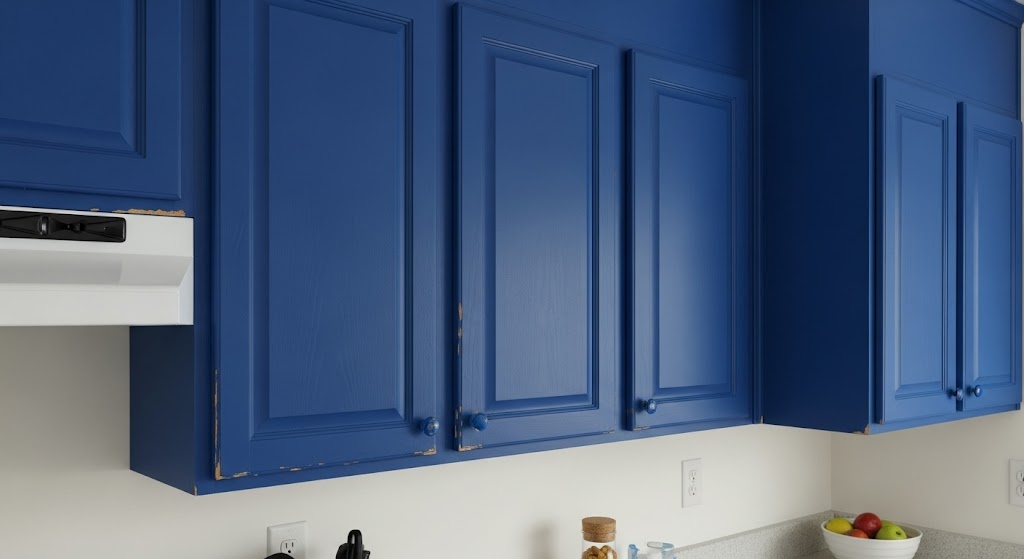
This is what most people reach for first, and I get why. It’s easy to work with and cleans up with soap and water. But on laminate cabinets, it’s not my top choice.
- Drying time: Quick; usually 2-4 hours between coats
- Finish quality: Decent coverage, but can show brush marks easily
- Durability: Fair at best. I’ve seen it chip and peel within a year on high-use cabinets
I only recommend this for cabinets that don’t get much handling, like upper storage units.
Alkyd-Modified Latex Paint
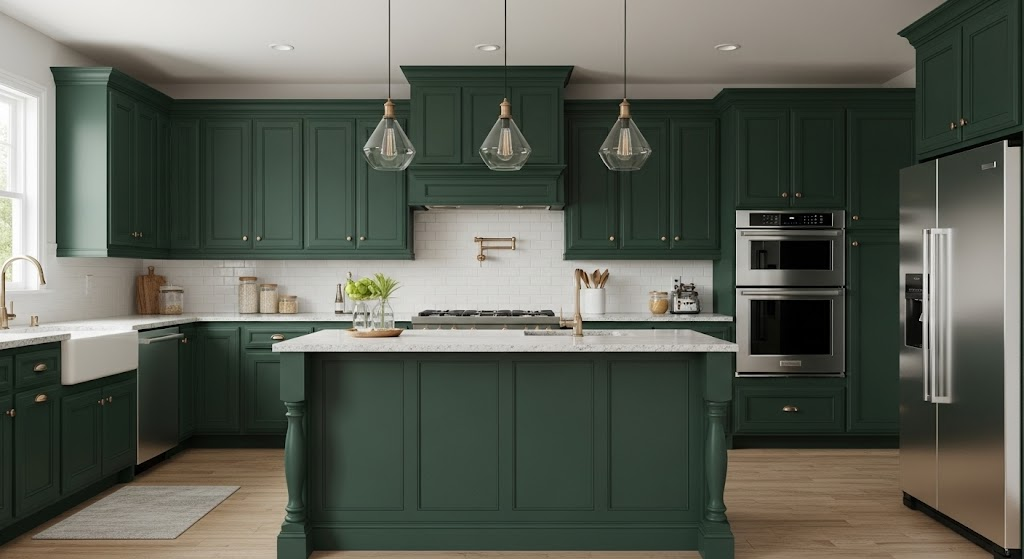
This hybrid paint combines the best of both worlds. I use this when homeowners want latex convenience but need better durability. The slight oil content helps it stick better to slick surfaces than regular latex.
- Drying time: Moderate; 4-6 hours between coats
- Finish quality: Smooth, professional finish that levels well
- Durability: Excellent. I’ve seen these finishes last 5+ years with proper prep
Cabinet-Specific Paint
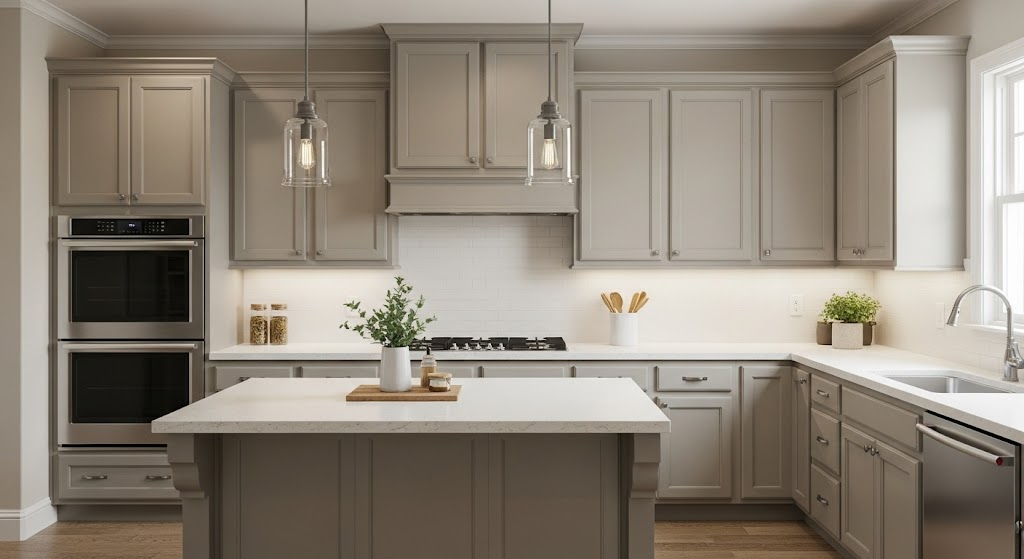
These paints are made just for cabinets, and it shows. I reach for these when clients want professional results without hiring a pro.
Use these to get professional results without hiring a pro.
- Drying time: Slow – 6-12 hours between coats, but worth the wait
- Finish quality: Superior smoothness with minimal brush marks
- Durability: Outstanding. Built to handle daily wear and tear
Chalk Paint
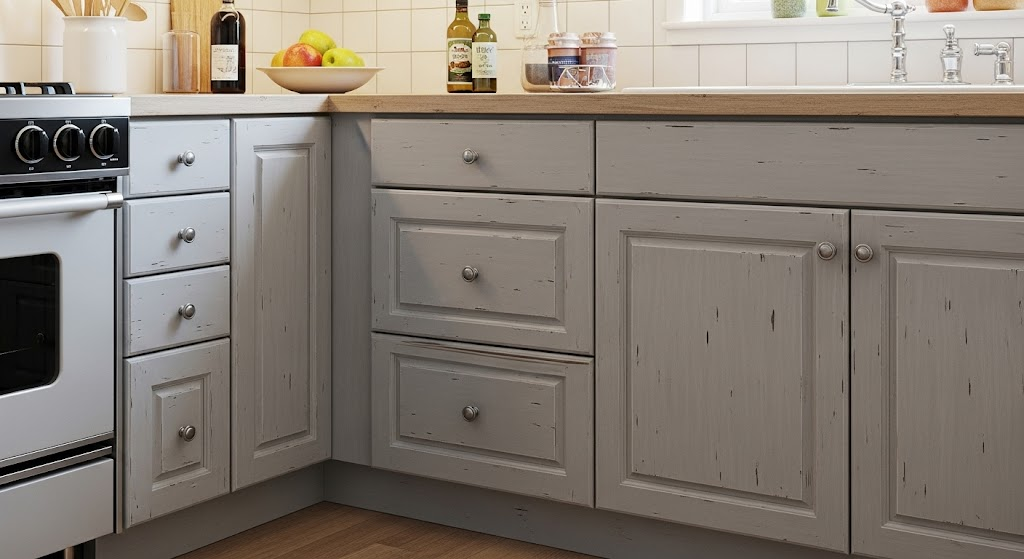
I love chalk paint for furniture, but cabinets? That’s a different story. It creates a unique look, but you need to know what you’re getting into.
- Drying time: Fast – 1-2 hours between coats
- Finish quality: Matte finish that can look uneven on laminate
- Durability: Poor without proper sealing. Scratches and stains easily
I don’t recommend this for kitchen cabinets unless you want a distressed look.
Oil-Based Paint
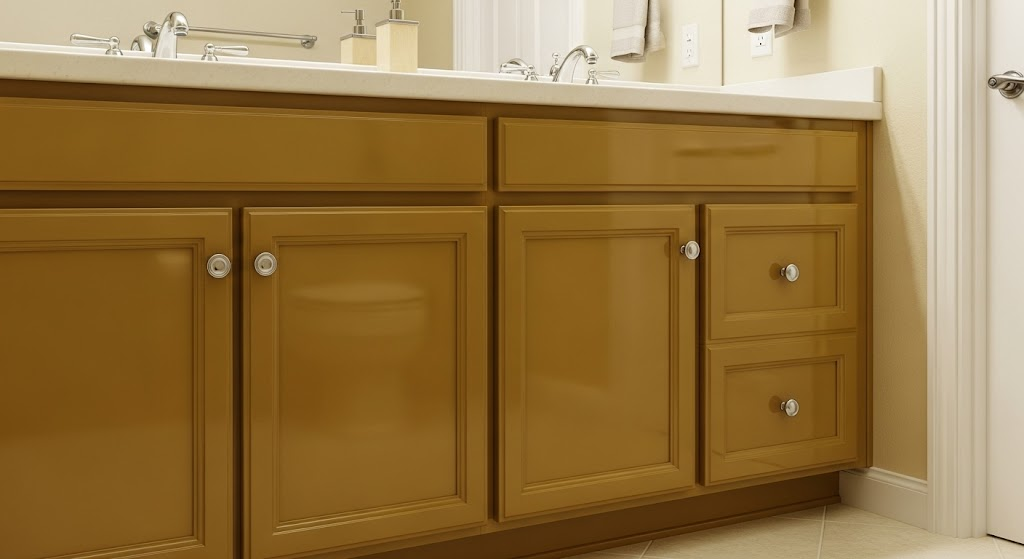
This is old-school technology that still works great. I use oil-based when clients want the hardest, most durable finish possible. I save this for bathroom vanities or cabinets away from natural light.
- Drying time: Very slow – 8-12 hours between coats
- Finish quality: Extremely smooth, glass-like finish when done right
- Durability: Excellent longevity, but yellows over time
To know the advice of real-time users about the laminated cabinets, read this thread: Ok real talk, can you actually paint laminate cupboard doors and get a decent result?
Common Mistakes to Avoid
Here are the top mistakes I’ve seen and made when painting laminate cabinets, and how you can avoid them:
1. Skipping Primer: If you’ve ever asked, can you paint laminate cabinets without primer? The answer is no, primer is essential for long-lasting results.
2. Not Letting Coats Cure: I’ve learned to wait the full recommended time between coats, even if it means an extra day. Rushing makes paint stay soft and prone to scratches and fingerprints.
3. Using the Wrong Cleaner: Regular soap isn’t enough for laminate. I always use a degreasing cleaner like TSP to remove invisible kitchen grease before I start.
4. Painting in Bad Conditions: I only paint when the temperature and humidity are just right. High humidity or extreme temperatures have ruined too many jobs for me, causing saggy, cloudy, or slow-drying paint.
5. Leaving Hardware On: Painting around hinges and handles never ends well. I always remove all the hardware first to achieve a clean, professional finish with even edges and no paint buildup.
To Conclude
Painting laminate cabinets isn’t just possible; it’s one of the most rewarding kitchen updates you can undertake.
The key lies in choosing quality paint and in following the steps for how to paint laminate cabinets.
When you invest in the right primer, use cabinet-specific paints, and follow proper curing times, your cabinets will look professional and last for years.
As you have got the answer, can you paint laminate cabinets? Start planning your cabinet makeover today, and remember, great results come from great preparation and the right materials.

